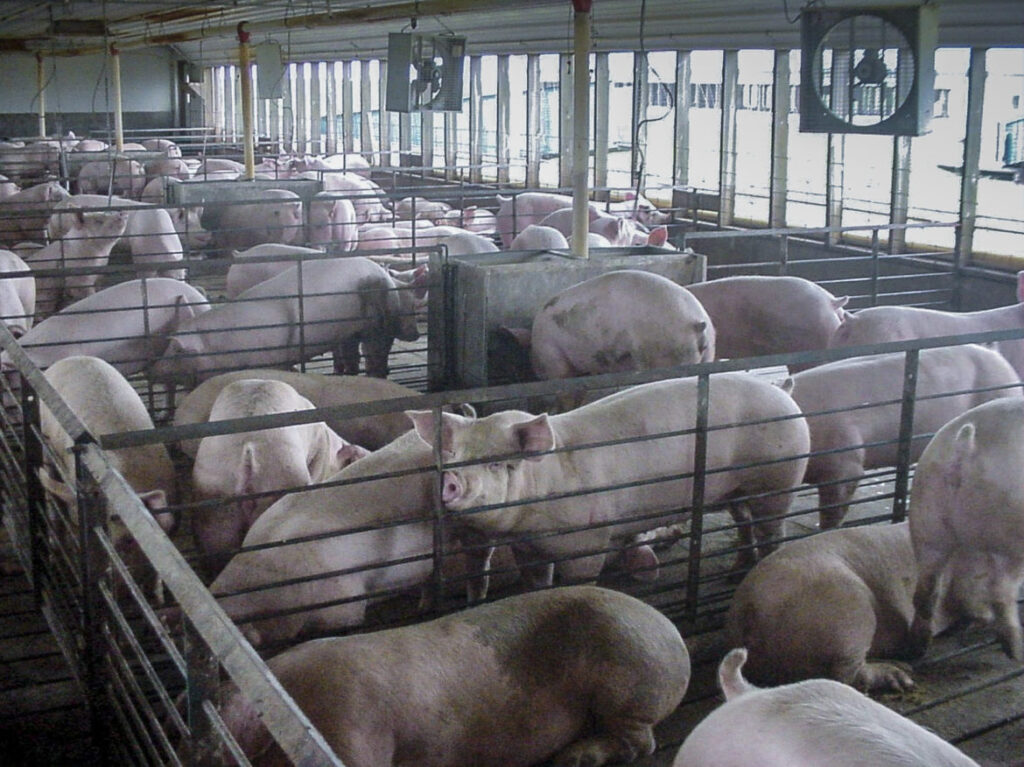A typical pen format for swine in many animal feeding operations. Photo by Investigate Midwest.
In some southern Minnesota counties, hogs outnumber humans by a factor of 40 to 1.
Minnesota is the second-largest hog producing state in the nation, generating more than $3.5 billion in sales in 2022. Most hog production takes place in the southern region of the state, along the border with Iowa, the only state that raises and slaughters more hogs than Minnesota.
Environmental activist organization Food and Water Watch released maps on Tuesday showing the concentration of livestock in southern Minnesota is among the highest in the nation, which has implications for water and air quality in those areas. The maps also show the state’s pocket of beef cattle in the southwest and large dairies in the central and southeast portions of the state.
Courtesy of Food and Water Watch.
Large livestock operations — often referred to as “factory farms” by activists and “concentrated animal feeding operations” by government regulators — are cash cows for farmers because of their efficiency; one building can house hundreds of cattle, thousands of hogs or hundreds of thousands of chickens.
Feedlots pose a danger to water and air quality in the areas where they are located. The manure produced by the animals is usually applied to surrounding crop fields as fertilizer, where rain washes it into the drinking supply. In more extreme cases, flooding and other natural disasters can lead manure lagoons to overflow, killing fish and causing more acute environmental damage.
During June flooding in southern Minnesota, at least seventeen manure pits overflowed, according to reporting by the Minnesota Star Tribune.
Data on the size and location of large livestock operations is difficult to come by because the federal government doesn’t keep track of them. Only around one-third of large livestock farms have federal permits; more have state permits, but the size threshold for permits varies from state to state, and the data is often not released to the public.
Courtesy of Food and Water Watch.
Advocacy groups and researchers build their own databases of large livestock operations by piecing together aggregate USDA data, state- and county-level permits and other independent sources.
Food and Water Watch built the map using data from the U.S. Department of Agriculture’s most recent Census of Agriculture, collected in 2022 and released earlier this year. The organization defines “factory farms” as having at least: 500 cows, 1,000 hogs, 500,000 broiler (meat) chickens sold annually, or 100,000 egg-laying hens.
Thirty-five of Minnesota’s 87 counties ranked in the top quartile nationwide for density of hogs.
In Nobles County in southwest Minnesota, home to a large JBS pork processing plant, there are more than 690 hogs per square mile. In neighboring Rock County, 88 farms produce nearly 400,000 hogs per year.

